 
|
Magnetic
Levitation train (Maglev) lines built. These new lines need ... between Seoul and Pusan
in South Korea,
which is planned to have 75 tunnels ...
The design of new high-speed railway lines requires longer and more numerous
tunnel sections, where aerodynamic effects limit the maximum allowed train velocity for a given tunnel cross-section area.
These effects influence the train power requirement, the traction energy costs and the pressure wave amplitude: the knowledge
of the unsteady aerodynamic field around the train is therefore essential to the optimum choice of a tunnel configuration,
and mainly of the cross-section diameter and of the presence and position of pressure relief ducts. The aerodynamic phenomena
generated by a train traveling at high speed through a long tunnel of small cross-section are analyzed by means of quasi one-dimensional
numerical simulations of the air flow induced by a train traveling at 120 m/s in a tunnel connecting two stations 60 km
apart. Several tunnel configurations at high blockage ratio are discussed, together with the positive and negative effects
of pressure relief ducts and of partial air vacuum. Aerodynamic phenomena are evaluated in terms of drag, pressure wave amplitude
and shock wave onset on the train tail. Results suggest that configurations consisting of twin tunnels connected by pressure
relief ducts near stations and operated under partial vacuum should be preferred.
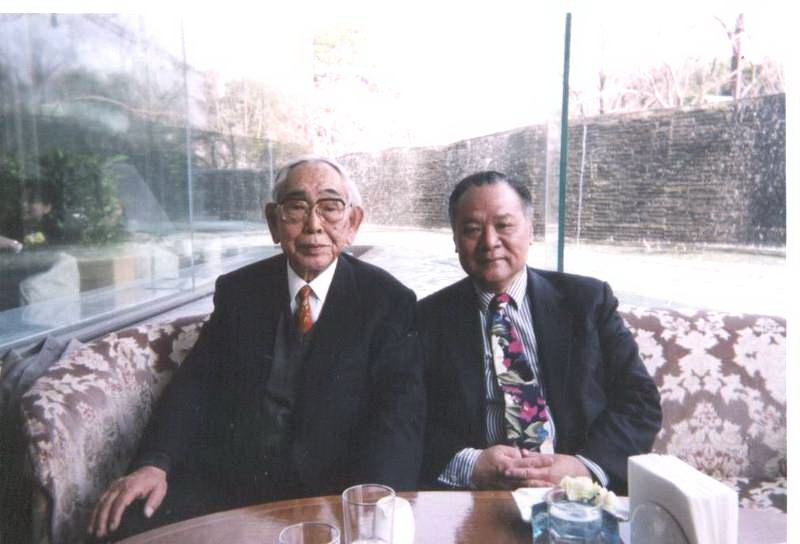
|
| Mr Owyang and Yoshihiro in Japan before flight to Korea for the Singning Ceremony. |
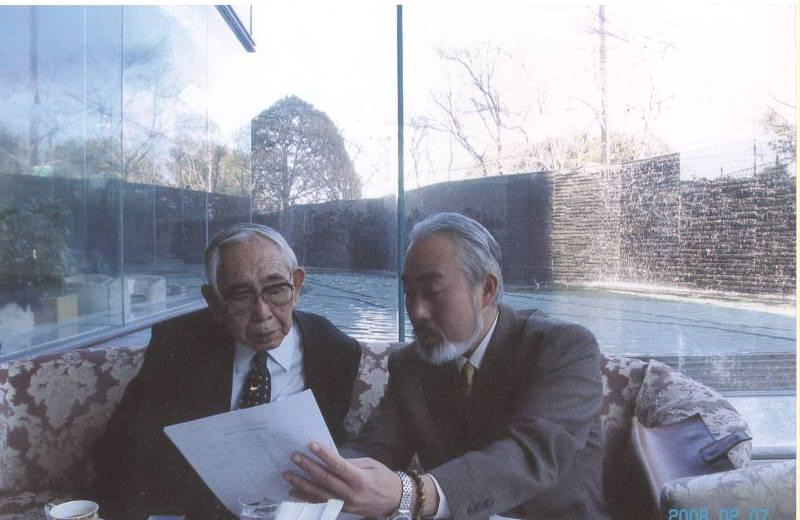
|
| Mr Yasuhiro Mukunoki will represent Mr Yoshihro for Singning Ceremony in Korea. . |
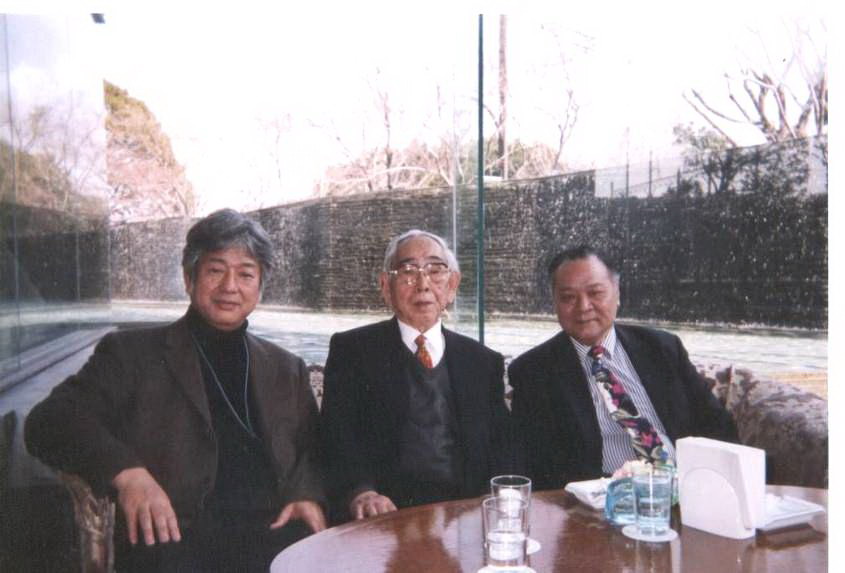
|
| Mr Sussumu Araki a secretary of Mr Owyang and Mr Yoshihiro Kyotani. |
|
|
 |
 |
 |
|
Flagship Maglev Group.
|
 |
|
Maglev in Korea
|
 |
|
|
 |
 |
|
Korea Maglev project update ...
The nation encompasses 98,480 square kilometers (the Korean peninsula is 219,020 sq. km.), and in 2003, boasted a population of 48.5 million. In terms of population density, Korea
currently ranks 11th in the world. Mountainous areas occupy
more than 70% of the land. Its neighbors include China (population: 1.3 billion), and
Japan (population: 130 million), which
rank among the larger countries of the world. Korea could well become a center for logistics, connecting huge markets, if it can improve its infrastructure— including higher-capacity ports and airports—and management to better
accommodate passengers and freight from neighboring countries.
Currently, Korea’s
railway network extends 3,125 kilometers and, due to rapid motorization
and urbanization across the country over the last four decades,
it also possesses a relatively extensive highway network of 86,900
kilometers. While no new rail lines have been added since 1945 (when
the country achieved independence from Japanese colonial rule), the
road network has expanded at an enormous rate
|
|
|
KRRI ventures into Maglev train project
Korea Railroad Research Institute ( KRRI ) set out to come up with research plans
to commercialize the MagLev(Magnetic Levitation) train system and embarked on focused research activities in October 2004.
Chosen
as one of the "top thirty National Innovation Systems" for the public use on the national level, the MagLev train project
is now emerging to rub shoulders with the KRRI's flagship project Korea High Speed Train in its critical value.
China
successfully put magnet-driven trains on track for the public when Korea
has been shy of momentum to put them to commercial use. As things stand, KRRI has set out to conduct research aimed at bringing
forward the MagLev commercialization project based on its localized technologies.
On this note, leader of MagLev
system research team Young-hoon Lee had an eight-day tour to Germany, China and Japan
in September for MagLev rides and system investigations. Back to work, he hosted a meeting to share his view and ideas on
the MagLev technology flow with outside attendees present from Rotem, kwangju
Metropolitan Subway Corporation, Korea Rail Network Authority.
He also met with researchers from Korea Institute of
Machinery and Materials in an attempt to seek cooperative measures over the course of the forthcoming national project
| |
|
Maglev Train Line for Seoul Proposed.
A magnetic levitation train line linking a futuristic international business
district in downtown Seoul with a new urban development project
in the city’s outskirts has been proposed, industry sources said Sunday ( Feb. 17 2008 ).
Samsung Corp., the head of the consortium that is moving to rebuild part of Seoul’s
Yongsan district by injecting 28-trillion won ($29.6 billion) into the area, said the train line proposal has been submitted
to the Seoul Metropolitan government for approval.
The Yongsan project is the largest urban development project to
date in the country, and calls for a 152-story office tower and residential apartments that can be transformed into an international
business hub.
The company said building the magnetic levitation trains, called maglevs, could greatly ease traffic
congestion and open new horizons for urban transportation.
Under the plan, the maglev train track will be laid from
the Songpa district in the city’s southeast, where a large residential area is being developed, to the Gangnam district
and then Yongsan, just north of the Han River.
Samsung said construction on the train
line could begin in 2010 for completion in 2013. The total cost is estimated at 840 billion won, with Samsung consortium funding
60 percent of the expense.
The remainder, the company said, could be paid by Seoul
and the central government.
Maglevs use a technology that propels trains at very high speeds over magnetically charged
tracks, allowing trains to float on top of electromagnets.
| |
 |
|
|
 |
|
Maglev in on his way to Korea ..
Two Main Corridors
Korea has two main transport
corridors and much of the country’s development
has occurred along them. The Seoul–Busan corridor runs southeast
from Seoul. Over 70% of the population resides along the corridor, and over 70% of the nation’s GDP is produced along it.
In addition, about two-thirds of passenger trips and
70% of all cargo trips originate there, since most of the
nation’s industrialization and urbanization has been concentrated
along this axis. The other corridor, Seoul–Mokpo, runs southwest
from Seoul. More farming areas lie along
this route and, hence, lighter travel
demand.
Signing Ceremony between Samsung Korea and Flagship.
Magnetic Levitated or so call Maglev had been step in Korea to make it reality start by signing ceremony between Samsung
Korea and Mr Yoshihiro Kyotani on 19 February 2008 in Seoul.Mr Yoshihiro Kyotani represent by Mr Yasuhiro Mukunoki in the
signing ceremony due to Mr Yoshihiro Kyotani is not convenience to travel.
Mr Yasuhiro Mukunoki a representative of Mr Yoshihiro Kyotani is relative to Sinsuke Kisi ( Japan ex
Prime Minister ). Nobu-u-ki-a-be ( Japan ex Prime Minister ) and also relative to Eisaku Sato ( Japan ex Prime Minister ).
| 19 February signing ceremony in Korea with Samsung |
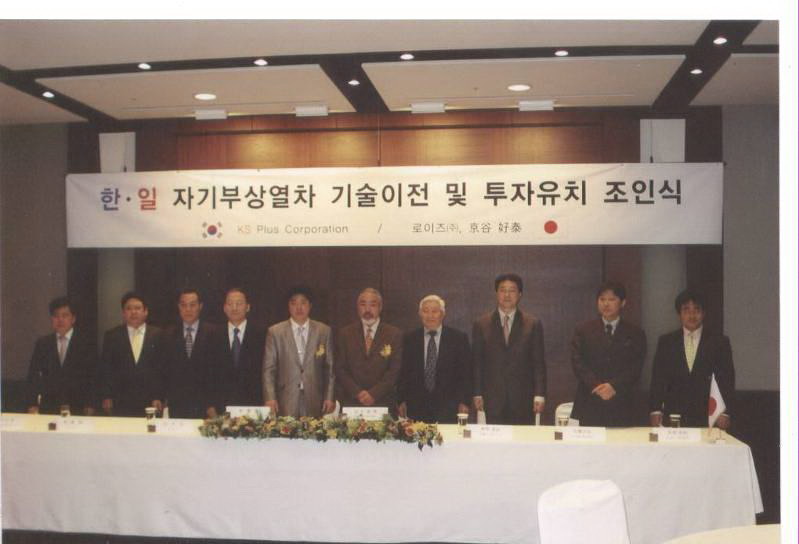
|
| Yasuhiro Mukunoki represent Yoshihiro Kyotani for signing ceremony. |
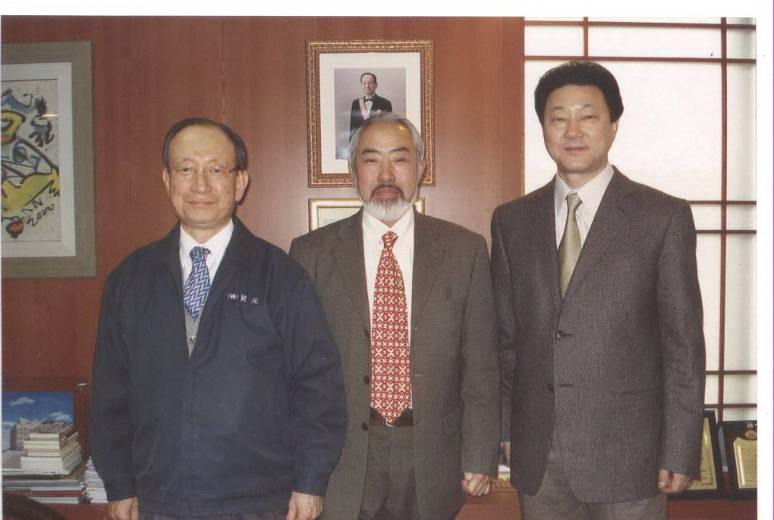
|
| Mr Yasuhiro Mukunoki and Director from Samsung Korea. |
Seoul to Pusan..
The Korean Maglev Line between Seoul and Pusan is linking the major economic and cultural
centers of Korea. The line has intermediate
stations and consists of 510 km track, including 27% of at-grade sections, 27% of viaducts and 46% of tunnels . The commercial speed will be 300 km/h and the traveling time 1hr 56 minutes between the
two terminal stations. The daily transport of passengers is estimated 520,000. The annual tonnage amounts to about 60 MGT.
|
 |
|
|
|
|
|
